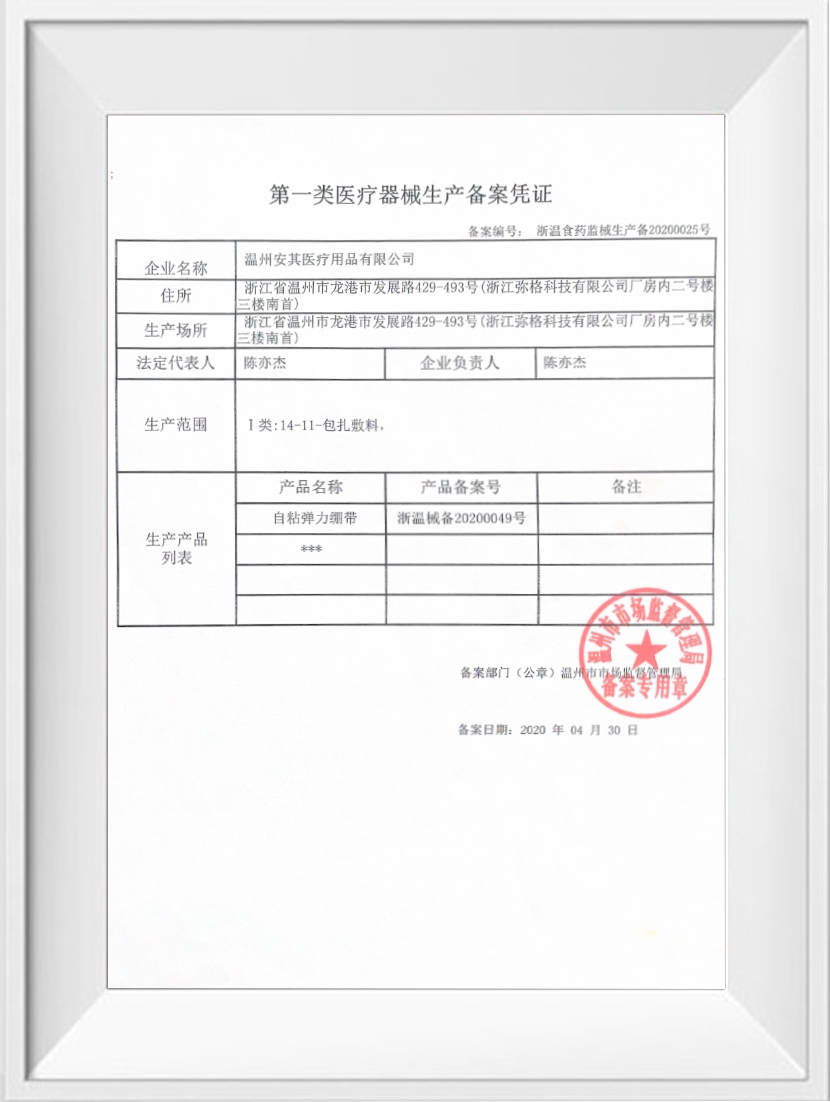Web Menu
Product Search
Exit Menu
We provide quality products and services to customers from all over the world.
What Are the Common Materials Used for Precut Kinesiology Tape For Knee?
Precut Kinesiology Tape For Knee has become a popular tool for athletes, physiotherapists, and individuals recovering from knee injuries. Its design provides targeted support, improves blood flow, and helps reduce discomfort. Understanding the common materials used in Precut Kinesiology Tape For Knee is essential to assess its effectiveness, durability, and comfort. This article explores the materials used in the fabric, adhesive, backing, and protective layers, and explains their significance for ideal performance.

Fabric Materials
The primary material of Precut Kinesiology Tape For Knee is the fabric, which determines flexibility, breathability, and comfort. Different fabrics are selected to meet various user needs:
Cotton Fabric: Cotton is commonly used due to its softness, flexibility, and breathability. It allows the skin to breathe while providing moderate elasticity, making it suitable for sensitive skin.
Synthetic Blends (Cotton and Polyester): These blends offer a balance between natural comfort and improved durability. Polyester adds strength and helps maintain the tape's shape during physical activity.
Elastic Fibers (Spandex or Lycra): Elastic fibers are integrated into the fabric to enhance stretchability. This elasticity allows the tape to follow the natural movements of the knee, providing support without restricting motion.
The combination of these fabric materials ensures that Precut Kinesiology Tape For Knee is both functional and comfortable for long-term use.
Adhesive Materials
The adhesive used in Precut Kinesiology Tape For Knee plays a key role in its effectiveness and wearability. A high-quality adhesive ensures the tape stays in place during activity while reduce skin irritation.
Acrylic Adhesive: This is the common type, providing strong adhesion that works well on different skin types. It is water-resistant and allows the tape to remain effective during sweating or light water exposure.
Medical-Grade Adhesive: Designed for sensitive skin, medical-grade adhesives reduce the risk of irritation or allergic reactions. This is particularly important for individuals with delicate skin or long-duration wear.
Heat-Activated Adhesive: Some tapes use adhesives that bond more effectively when warmed by body heat, improving adherence and flexibility during movement.
Choosing the right adhesive material ensures that Precut Kinesiology Tape For Knee provides reliable support while remaining safe for the skin.
Backing and Protective Layers
The backing material and protective layers in Precut Kinesiology Tape For Knee contribute to ease of application, storage, and durability:
Silicone or Paper Backing: These layers protect the adhesive before use and facilitate smooth application. They allow users to apply the tape accurately without the adhesive sticking prematurely.
Release Liners: The release liner prevents contamination of the adhesive during storage and handling. It also ensures the tape maintains its effectiveness until it is applied to the skin.
Breathable Protective Layer: A breathable layer in the backing helps maintain airflow to the skin, reducing moisture buildup and enhancing comfort during wear.
These layers make the tape user-friendly and help preserve its functional properties until it is ready for use.
Additional Features and Enhancements
Some Precut Kinesiology Tape For Knee products include additional materials or coatings that enhance performance:
Water-Resistant Coating: Enhances adhesion during sweating or light water exposure, ensuring the tape stays in place during physical activities.
Anti-Microbial Treatment: Some tapes include materials that reduce the growth of bacteria, maintaining hygiene during extended wear.
Hypoallergenic Coatings: Improve safety for users with sensitive skin or allergies, reduce irritation while maintaining support.
These enhancements increase the versatility and usability of Precut Kinesiology Tape For Knee for a wide range of users.
Keep In Touch
No.455 New Town Development Road,Longgang City, Wenzhou City
Copyright © Wenzhou Anqi Medical Supplies Co., Ltd. All Rights Reserved.
Approval No: Zhejiang Wenzhou Food and Drug Administration Machinery Production Filing No. 20200025
The information provided on this website is intended for use only in countries and jurisdictions outside of the People's Republic of China.

 English
English русский
русский 中文简体
中文简体 Español
Español Deutsch
Deutsch عربى
عربى

